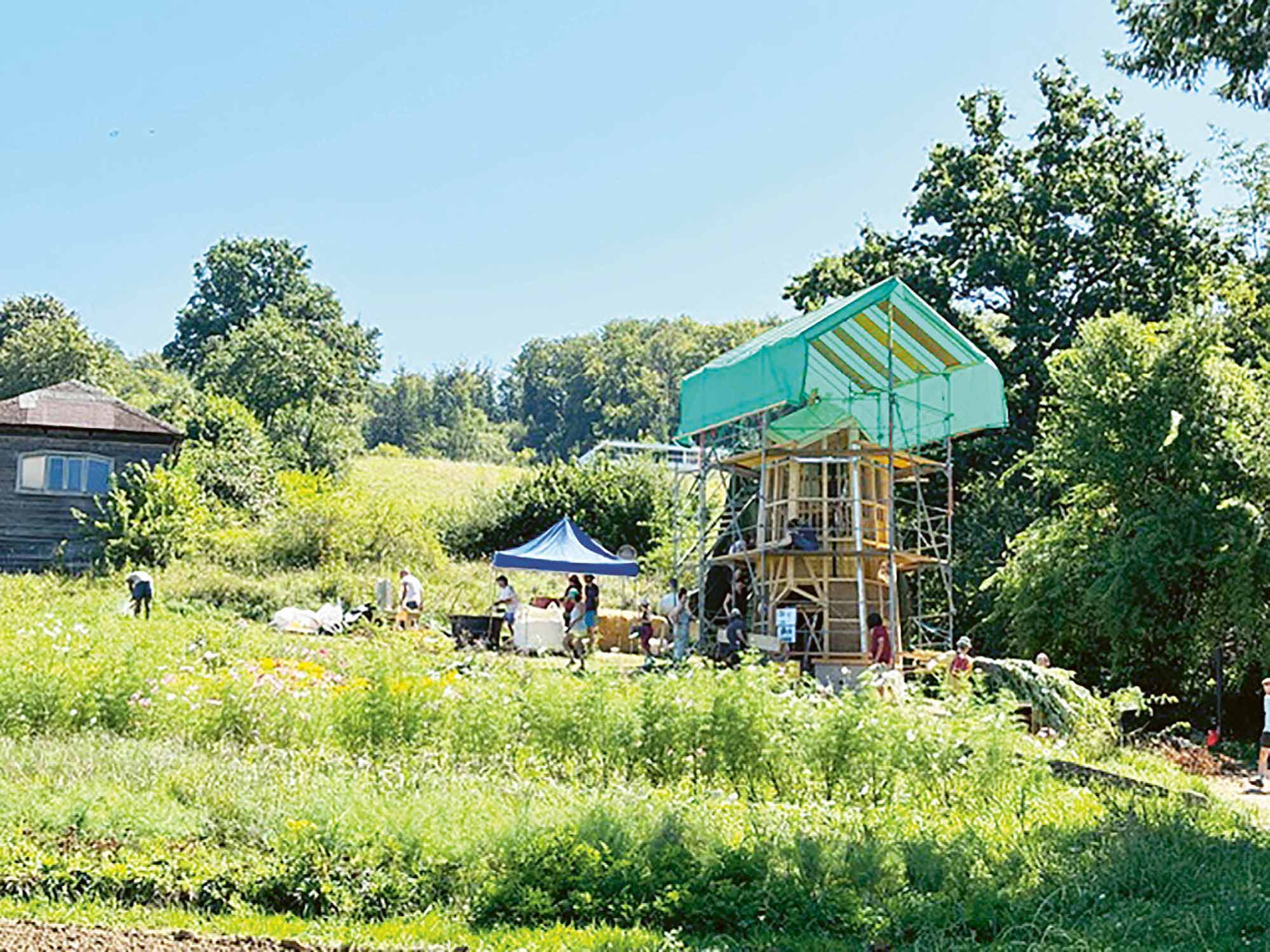Goetheanum, Switerland. Over the past few weeks, Barbara Schnetzler and 48 helpers have built the bee house, constructing the rammed earth and filling the framework with it. The result is a walk-in sculpture that allows visitors to encounter the insects with all their senses and experience their work throughout the year, as well as gain an insight into Demeter beekeeping.
The location is perfect: next to the observatory and the wildflower meadow. The beehive is a sculptural candle-shaped building reminiscent of the large menhirs of Brittany. Just as such stones take up the position of the sun and connect it with the earth, so do the bees that make their home in the building. The outer shape of the building is the negative form of a honeycomb, which reflects the basic hexagonal structure of bees. While bees build their honeycombs horizontally, here the honeycomb imitated by the shape of the building is upright. This vertical structure is reminiscent of a crystal, and with its height of six meters, it looks like a monolith in the landscape. As with the honeycomb, the roof is shaped like a cube or a rhomboid dodecahedron that sinks into the building. It is translucent at the tip of the cube, allowing light to stream down into the interior and create an interesting effect. The walls in the dark interior are covered with beeswax up to the base of the cube.
Visitors enter the interior, which has a diameter of 3.5 meters, via two steps. Like the bee in the honeycomb, you step into the darkness. You can smell the wax on the walls and the intense smell of the bees, which have their dwellings in the walls on the north and east sides of the building. As you linger in the dark, the sparse light in the interior intensifies and highlights the gold of the wax. Two “Schweizerkästen” (traditional Swiss beehives) are used in the apiary. The walls of the boxes in the interior are made of glass, allowing you to watch the bees and honeycombs being built. The buzzing of the worker bees can be heard through auditory funnels on the beehive. The concrete platform is also a round bench where the beekeepers can store their equipment. The circular seating arrangement provides an opportunity to discuss bee experiences. Four so-called one-room hives are planned in the vicinity of the bee room as a further way of keeping bees.
Translation Charles Cross
Photo Nicole Asis









